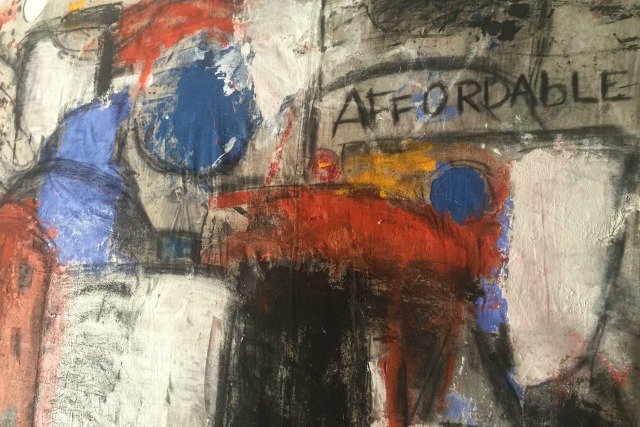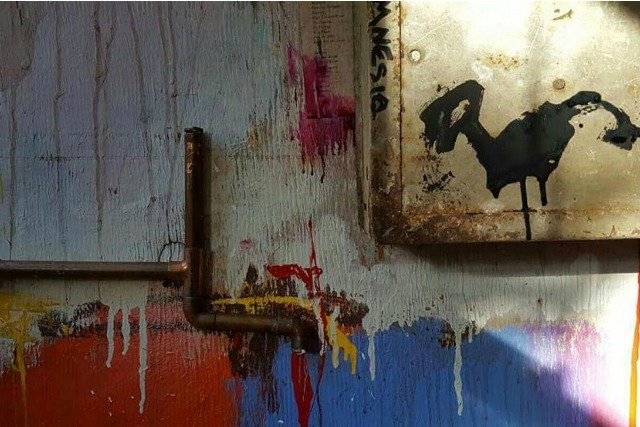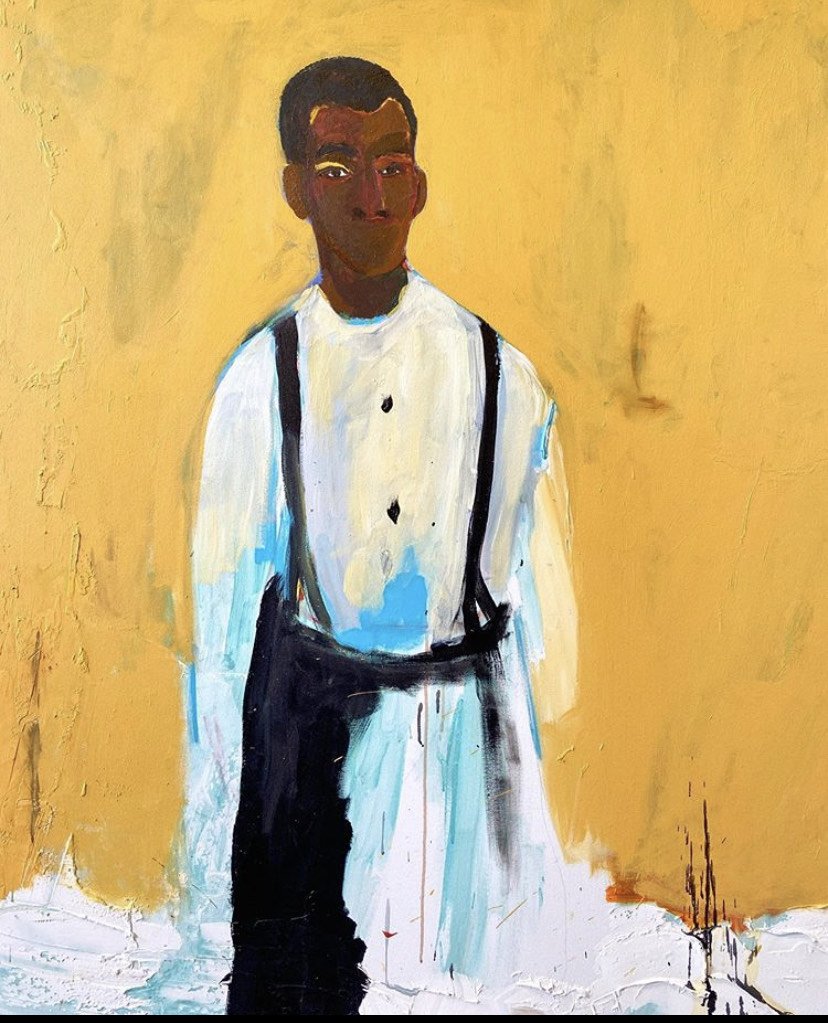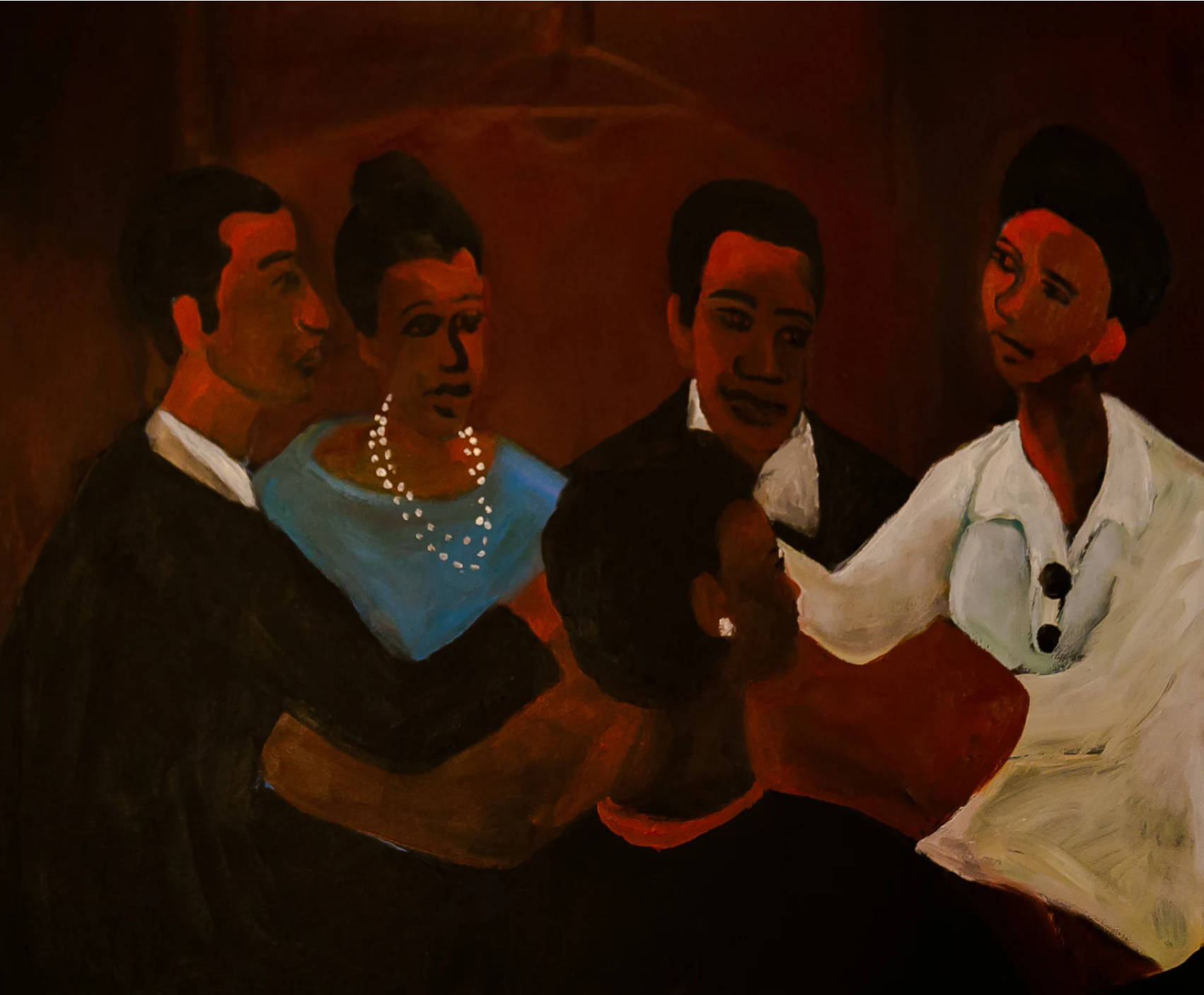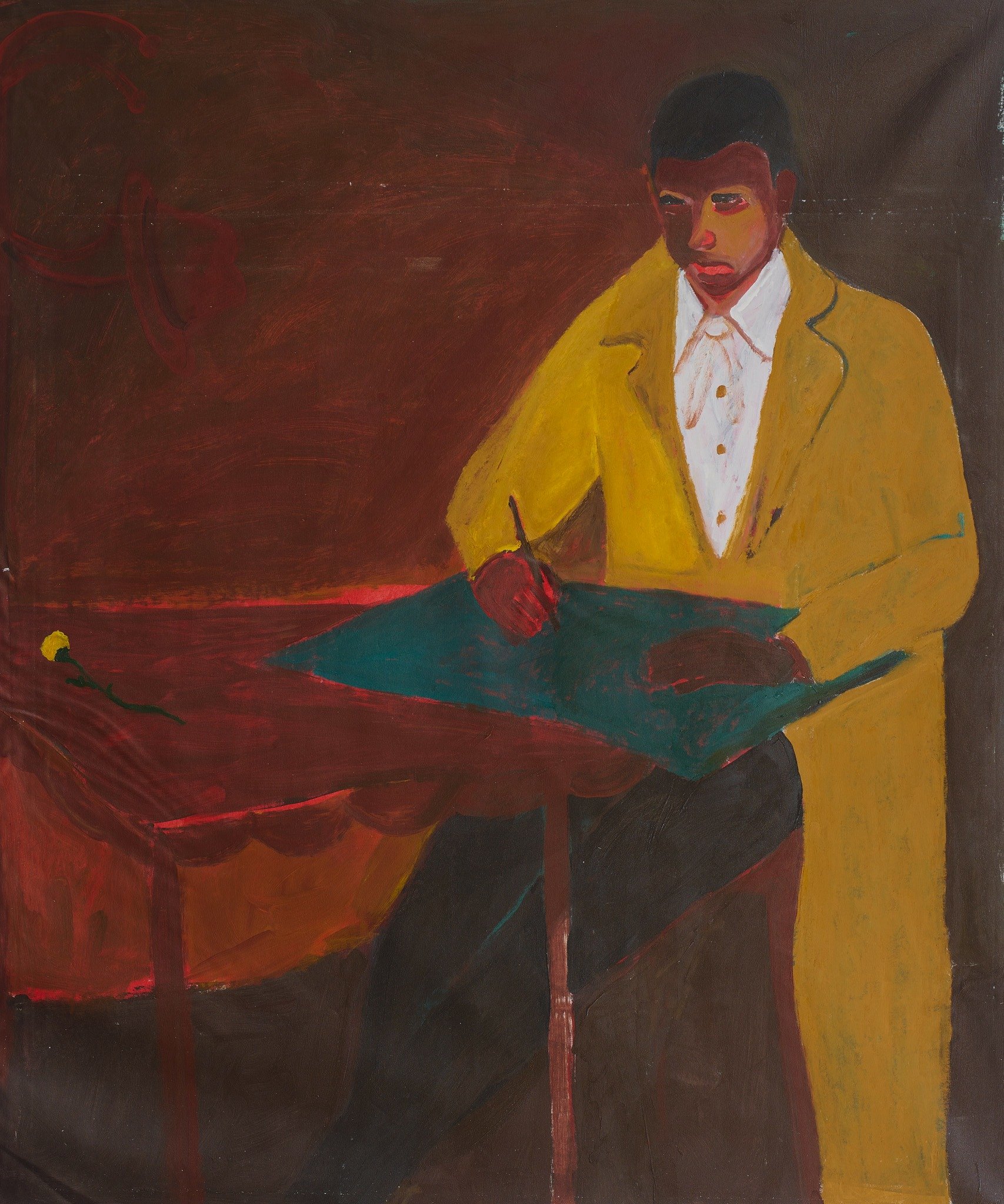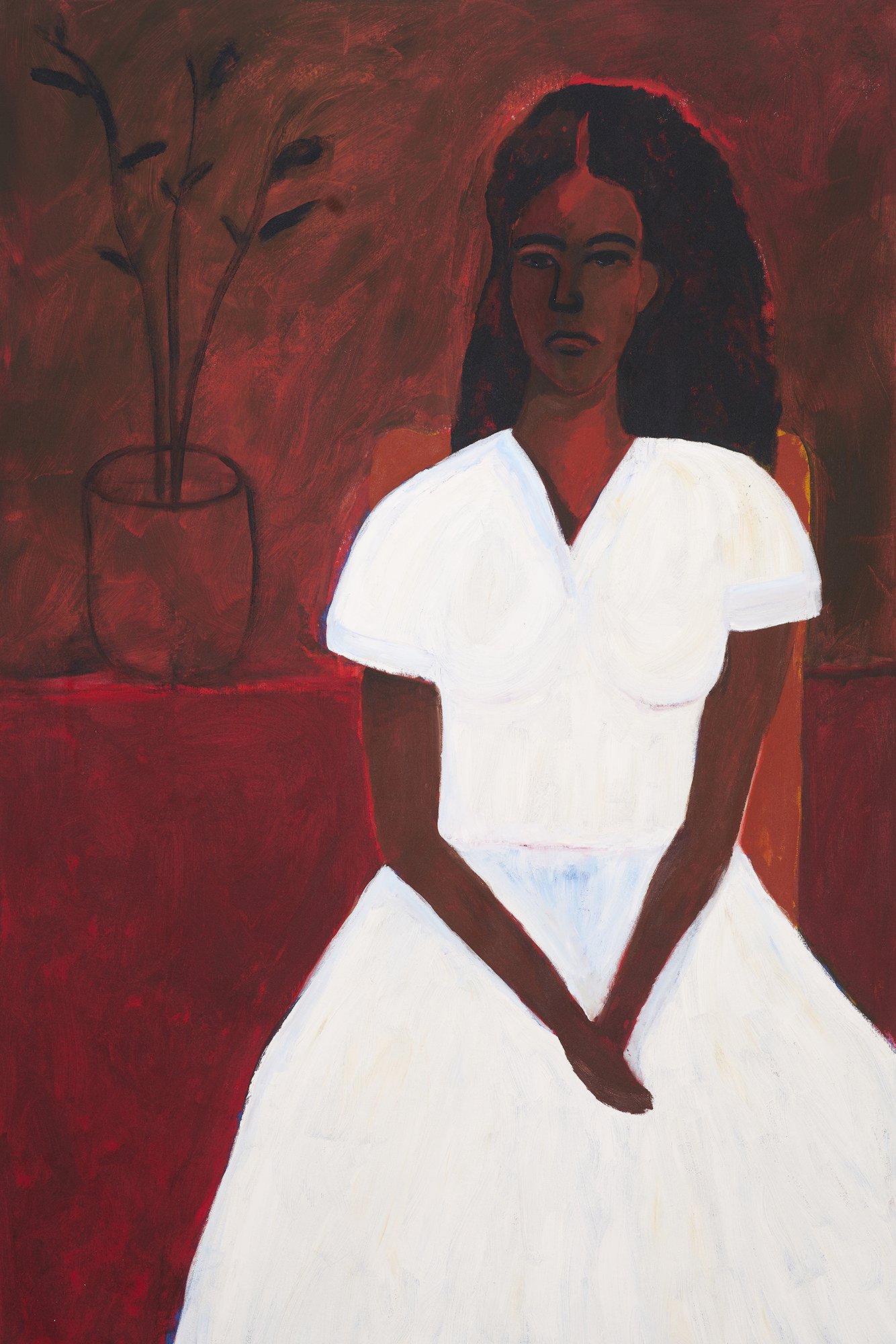Finding community through past and present: Patrick Eugène
I am very happy to present you this collaboration with Art Match (www.yourartmatch.com) which might be a recurring partnership. Art Match is an emerging art advisor company based in London, UK founded by Anthony and Olivia Roberts. Click in the link to discover more about them. Discover our article below about Haitian-American artist Patrick Eugène.
Patrick Eugène (b. 1984) is a self-taught Brooklyn-born, Atlanta-based artist whose work centres around the theme of Black community with a sober but hopeful outlook.
Eugène's career as an artist didn't start until the age of 27. But he has quickly established himself in the field by leveraging his rich life experience growing up in Brooklyn, working in finance and now living through a pandemic and global social justice movement. Eugène closely observes contemporary issues impacting the Black community and is also a student of history. He brings the past and present together in the form of a powerful aesthetic that celebrates community, the dignity of the individual and captures a grounded hope for a better future for people, particularly Black people, around the world.
“I think there is a neutral phase – moments in time where we are thinking and we do not have a smile on our face or a frown. A neutral expression. That does not mean there is not a lot going on around or within this particular person. Allowing that openness and giving the viewer the license to figure that out on their own is probably the greatest part of this whole thing for me.”
Looking out, 2021, Acrylic on linen, 200 x 207 cm
Being from Haitian descent, Eugène identifies as Caribbean and Afro-American and represents his culture and the community in his paintings which he has a strong attachment to. He grew up in a house decorated with Haitian art and had his own passion for music and poetry at an early age. Unlike most artists, Patrick Eugène started painting in his late twenties. Formerly working in finance, Eugène took a big U turn to start his career in the arts after the growing interest in his very first works. Painting became more of a passion rather than a hobby that he described as an ‘out of body experience’. Starting a career in the arts at what could be considered late enabled him to already have a construct of his own identity while learning through it.
Eugène first started painting in the abstract expressionistic style, drawn to the energy it brings to a work. In his early days, Patrick Eugène was inspired by his surroundings and by observing situations around him. He painted in reaction to what was happening in East New York where many historical buildings and community parks were being replaced by new accommodations, not purposed for the community already residing there. His first artworks could be described as mixed media as he would use objects directly from construction sites like cotton dust sheets or pieces of pipes and incorporate it in the painting, transforming it into a sort of sculpture. Eugene was very concerned with the gentrification of Brooklyn, which he criticised through his work notably with his first exhibition in Brooklyn in 2016 Deconstruction. His inspiration and subject matter do not only refer to Brooklyn’s situation but also worldwide, as gentrification is a very common displacement phenomenon.
In his latest works, Patrick Eugene created large scale portraits of Black individuals with an abstract or neutral background. There is a certain flatness in the way the faces are painted, something that he says was inherited from his abstract background. It can remind you of Picasso in the features of his characters, often simply traced with a brush stroke with few details. While discovering the style, Patrick Eugene also explored the layering of colours: using earth tonalities, with red, brown and black, he learned how to give some depth to the painting and make his characters glow. The singularity of his work can be found in the expression of the character’s faces, passive or somewhat neutral faces: none of them are smiling, they often look away or are busy and focused on doing something else rather than interacting with the viewer. Danny Dunson, curator and founder of Legacy Brothers, has described them as meditative and pensive postures. Patrick Eugene stages unknown figures of the past who were involved with cultural movements from his inspiration and reflect today’s people still actively fighting against inequalities.
As I have seen before, some artists do not want to convey anything specific but would rather have the viewer tell them what they feel or what they see. Patrick Eugene wants to convey a feeling, one that belongs to the viewer. His paintings open conversations and divergent opinions which bring openness and discovery to the table, which is in fact what he has been doing while researching about his ancestry and painting at the same time. It is interesting to see the shift in Eugène’s work from abstract to figurative. One could think that he is following a trend, but the story of his understanding of his own heritage and history makes much more sense. This is a direct reaction to the events that occurred during the pandemic. In a sense the representation of his characters is how we were standing ourselves: in a state of pause or halt, a state of uncertainty of what would be coming next. Through the exploration of his work, Patrick Eugene enters into a deep introspection and shares with us his discoveries. He introduces us to his own perspective on a Renaissance of Black people, a support of a long-lasting sense of community.
Eugene talks about his 2016 Brooklyn exhibition Deconstruction and his roots:
Reference
Danny Dunson curatorial text, Where do We go from Here
https://spoilednyc.com/patrick-Eugène -cultural-deforestation-brooklyn-deconstruction/
https://gothamist.com/arts-entertainment/east-new-york-painter-patrick-eugene-tackles-gentrification-in-the-abstract
https://contemporaryand.com/magazines/patrick-eugene-where-do-we-go-from-here/
Contact:
Patrick Eugene
@patrickeugeneart
Text in collaboration with Art Match



